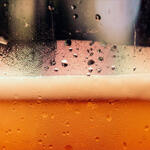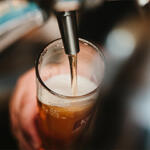
The Importance Of Good Beer Gas: Behind The Scenes At The Pub
When you order a pint of beer at your local pub, it streams beautifully out of a tap and into your glass.
Lager drinkers love a bit of fizz whilst ale drinkers require a nice creamy head, but one thing every alcohol connoisseur has in common is a hatred of a badly pulled drink.
If your pint doesn't justify parting with hard-earned cash, you can often blame it on sub-par gas.
High quality, food-grade gas is essential for the perfectly poured pint. It needs to be kept at the optimum pressure, stored safely, and only then will
it keep the drinks in tip-top shape.
What's in beer gas?
Beer gas is usually a mix of Carbon Dioxide (CO2) and Nitrogen, although sometimes 100% CO2 gas is perfectly appropriate for use with soft drinks and lagers.
Usually, however, a gas canister containing 70% Nitrogen and 30% CO2 will be used for with ales and stouts. This mixture imparts the delightful creamy texture everyone likes to see in a pint of Guinness or John Smiths, and leaves the drink smooth and velvety.
With lagers and ciders, 100% CO2 can be used, but the alternative is to use a 40% Nitrogen and 60% CO2 mix. Both methods give drinks the familiar bubbles that you'd expect, and keep the beer light.
For the teetotallers or designated drivers, soft drinks always use 100% CO2 gas to get their fizz.
How to store gas in safely
Gas bottles in pub cellars can be highly dangerous if not treated carefully. Problems caused by bad gas safety practice can range from the inconvenient – a spoiled keg of beer – to the alarming: beer gas is flammable and were a cylinder to fail, the consequences could be calamitous.
Gas bottles must be stored upright and secured to the wall when they are full, and pub landlords are responsible for making sure only trained staff handle gas.
Drinks dispensing gas should always also be sourced from a reputable supplier like London Gases. Get in touch to find out more.
